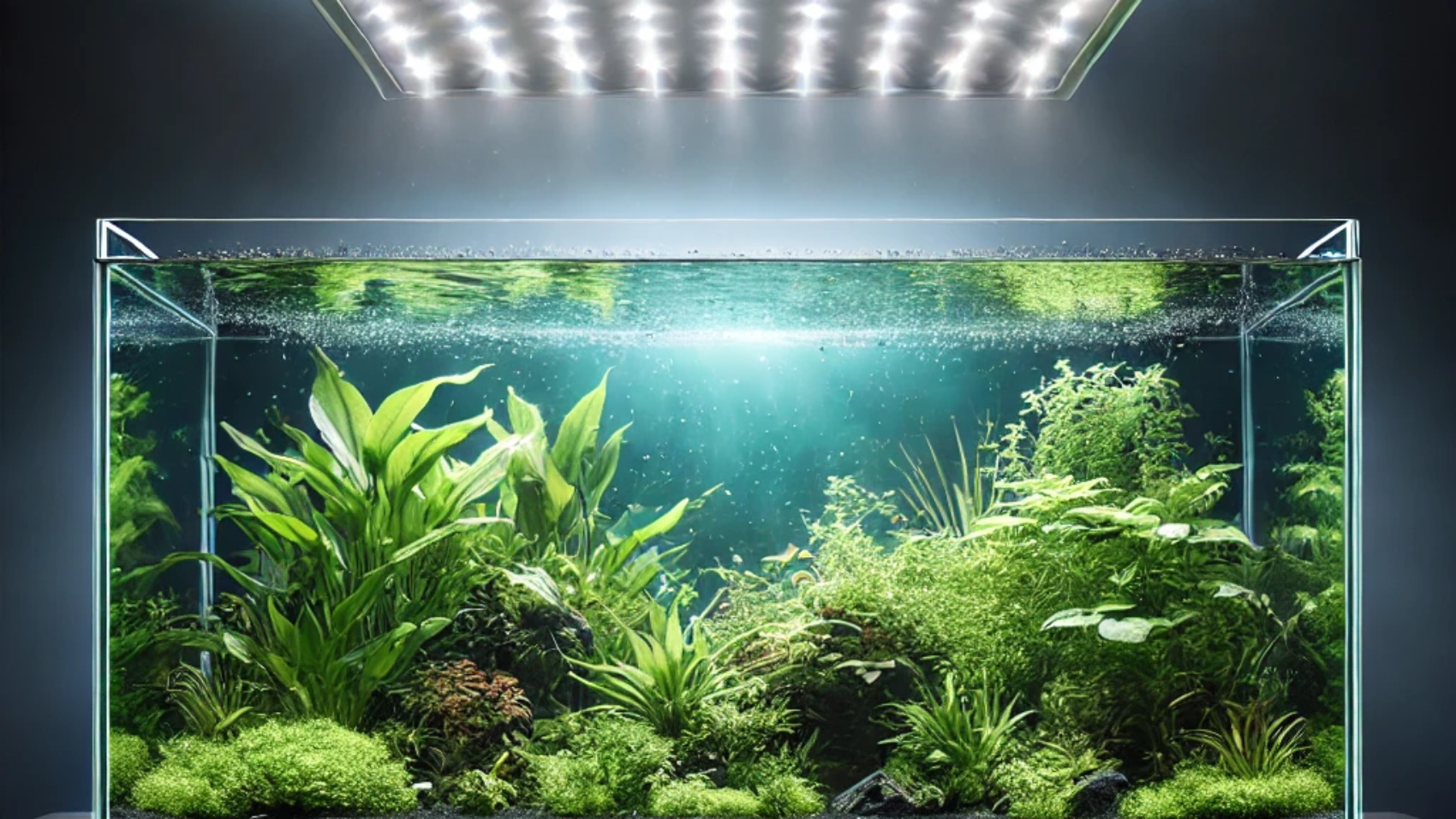When it comes to maintaining a thriving planted aquarium, lighting plays a pivotal role. It’s not just about making your tank look great; proper lighting fuels plant growth, enhances coloration, and maintains the delicate balance between plants and algae. Whether you’re just starting with your first planted tank or looking to optimize your setup, this guide combines practical beginner tips and deeper insights to help you master aquarium lighting.
Why Is Aquarium Lighting So Important?
In the world of Natural Fish Tank, lighting is often called the accelerator of your tank. It drives photosynthesis, which keeps your plants healthy and vibrant. However, too much or too little light can throw the system off balance, leading to poor plant growth or algae overgrowth.
Here’s what happens when lighting is misaligned:
- Too Much Light: Without proper CO2 or nutrients, high light intensity fuels algae growth, turning your tank into a green mess.
- Too Little Light: Your plants won’t photosynthesize effectively, leading to poor growth and increased algae.
Balancing your lighting and nutrients is key to a beautiful, thriving aquarium.
The Basics: 5 Things I Wish I Knew About Planted Aquarium Lighting
1. Invest in a Quality Planted Tank LED
Yes, it’s tempting to use the default light that comes with your aquarium or a cheap alternative, but they often lack the intensity or spectrum needed for plant growth. High-quality LED lights, are specifically designed for planted tanks. They’re easy to use and provide the full light spectrum your plants need.
- Ensure the light covers the entire tank. Some lights have poor spread, leaving the edges of your tank shaded.
- For larger aquariums, consider using multiple lights or placing high-light plants in the center and low-light plants on the edges.
Petzlifeworld LA Series Ultra Thin Grass Frame Aquarium Light (LA 60 | 18W | 60-70CM) – https://amzn.to/3SFTUGG

2. Understand Lighting Strength (PAR Ratings)
Lighting strength is often measured in PAR (Photosynthetically Active Radiation), which quantifies the light intensity plants can actually use for photosynthesis.
General PAR Guidelines:
- Low-light plants: 15-30 micromoles.
- Medium-light plants: 35-50 micromoles.
- High-light plants: 50+ micromoles (with CO2 injection to avoid algae).
Some lights list their PAR ratings, but if they don’t, you can find user-measured data online or rent a PAR meter from your local fish club.
3. Use a Timer if needed
A consistent lighting schedule is essential for plant health and algae control. Using a timer ensures your plants get the light they need without overexposure.
Suggested Lighting Duration: 8 – 12 hours or natural fish tanks
You can even split your lighting into two sessions (e.g., morning and evening) to match your viewing habits while minimizing algae risk. Running your light continuously will mimic nature.
4. Adjust Lighting Based on Your Tank
Not all tanks are the same. Deeper tanks require stronger lights to ensure sufficient light reaches the bottom, while shallow tanks can thrive with lower-intensity lights. Dimmable LED lights provide flexibility, allowing you to fine-tune brightness based on your plants’ needs.
5. Start with Lower Light Levels
When introducing new plants, start with reduced light intensity. Plants often go through an acclimation period where their growth slows as they adjust to the new environment. Too much light during this phase can fuel algae growth.
Pro Tip:
- Use a timer to start with 6 hours per day and gradually increase to 8+ hours as plants stabilize.
- For dimmable lights, start at 50% intensity for taller tanks or 25-35% for shorter tanks, then slowly increase over a few weeks.
Types of Aquarium Lighting: Why LEDs Dominate
For decades, aquariums relied on incandescent, fluorescent, and metal halide lights. Today, LED lighting is the gold standard for planted tanks. Here’s why:
- Energy Efficiency: LEDs provide the highest lumens per watt, saving energy and reducing heat output.
- Longevity: LEDs last significantly longer than traditional lights, making them cost-effective.
- Optimized Spectrum: LED lights are tailored to deliver the wavelengths plants need, particularly in the 400-700 nanometer range (red and blue light).
- Even Light Spread: LED fixtures provide even coverage across the tank.
Setting Up Your Light: Tips for Success
- Add a Timer: Consistency is key. Use mechanical timers or smart plugs for precise control.
- Use a Dimmer: If your light doesn’t have one, consider an external dimmer to fine-tune intensity.
- Experiment and Observe: Start with lower intensity and duration, then adjust based on plant growth and algae levels.
Final Thoughts: Mastering the Art of Aquarium Lighting
Lighting is both an art and a science. By understanding PAR, choosing the right equipment, and maintaining a consistent schedule, you can create a thriving aquascape that enhances the beauty of your home.
Take the time to experiment, find what works for your unique setup, and enjoy the journey. At NaturalFishTank.com, we’re here to help you every step of the way. Explore our resources, check out trusted products, and build the planted tank of your dreams!
Happy aquascaping! 🌿🐟
